Table of Contents
Categories
Bearing Materials: All You Need To Know
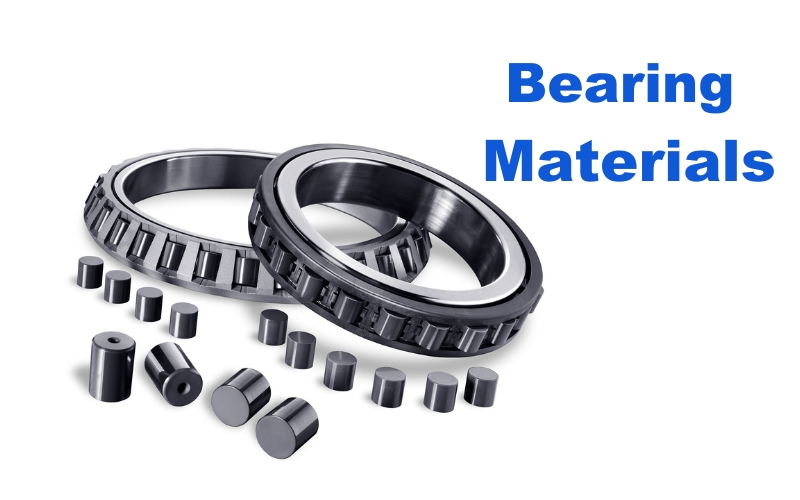
Introduction
Bearings are important components used to reduce friction between moving parts in machinery, making operations smoother and more efficient. The material selection of bearings is crucial, and the material directly affects the performance and service life of the machinery. In this article, We will explore the materials used in the different components of a bearing, discuss how to choose the right bearing material based on different factors, and examine their applications in industry.
Understanding Bearing Materials
Bearings are the key to the smooth operation of machinery, so the material of each component is the key to bearing performance and durability. Common bearing materials include steel, ceramics, and plastics. Steel has strength and durability and is mainly used to make bearing rings and rolling elements. For the cages that fix these rolling elements, steel plates, copper alloys, or synthetic resins are usually used. Each material is made of different components and has its own unique advantages. Steel is strong, copper alloys have excellent conductivity and corrosion resistance, while synthetic resins are lighter and reduce the risk of lubricant contamination.
Factors To Consider When Selecting Bearing Materials
Bearing materials can be made of plastic or metal, and ceramics, the specific selection depends on the following factors:
——Loads: Bearings that need to withstand high loads usually need to be made of strong and durable materials, such as steel or ceramics, to prevent deformation and failure under pressure.
——Speed: Materials vary in their ability to handle friction and heat, and in high-speed applications, the speed at which the bearing runs will affect the choice of material.
——Environmental Conditions: Factors such as temperature, humidity, and corrosive agents in the environment in which it is exposed will require materials with specific properties.
——Sealing: Materials for seals and bearings must be selected to complement each other, ensuring that the seal does not degrade due to the environmental conditions or frictional heat generated by the bearing.
——Application: The specific application of the bearing usually determines the choice of material. For example, bearings in food processing equipment require non-toxic and corrosion-resistant materials, so some plastics or stainless steel are more suitable. Aviation applications require lightweight and high-temperature resistance, so high-performance ceramics are more suitable.
——Bearing Type: Depending on the type of bearing (whether it is a roller bearing, ball bearing, or thrust bearing), each bearing operates differently and requires different materials to perform optimally.
——Compressive Strength: Selecting materials with high compressive strength can prevent material failure under compressive loads.
——Friction Requirements: When selecting materials, consider strength and durability, and be able to provide a low coefficient of friction when combined with an appropriate lubrication strategy.
The Different Types Of Bearing Materials
When considering bearing materials for various applications, the choices are broad, including both metallic and non-metallic materials, each with unique uses based on their inherent properties.
✯ Metallic Materials:
——Carbon Steel Bearings: Known for their strength and durability, they are the first choice for cost-effectiveness in general applications. It can handle medium pressures but is not suitable for use in highly corrosive environments.
——SAE 52100 Chrome Steel Bearings: is a high-carbon, chromium alloy steel that provides high hardness and excellent wear resistance. Capable of maintaining shape and smooth surface for a long time under high-stress conditions, it is widely used in precision bearings in automotive and aerospace applications.
——Stainless Steel Bearings (Including 440 Grade Martensitic, AISI316 Austenitic): Stainless steel bearings are an ideal material choice when in an environment prone to moisture and corrosion. The 440 grade martensitic offers a balance of corrosion resistance and hardness, suitable for many industrial applications. In contrast, AISI316 austenitic stainless steel is preferred in severe corrosion environments like marine or chemical processing, where its superior corrosion resistance is essential.
✯ Non-Metallic Materials:
Ceramic bearings can be made from materials such as zirconium oxide, silicon nitride, and silicon carbide, each of which has different properties.
Among them,
——Zirconia (ZrO2): has strong crack resistance and wear resistance, can withstand high temperature and corrosive environments, and also has good insulation properties.
——Silicon Nitride (Si3N4): This material has excellent thermal stability and low density, which reduces centrifugal forces at high speeds, thereby reducing the overall wear rate of the bearing.
——Silicon Carbide (SiC): It has good hardness and thermal conductivity and is very suitable for high-temperature applications. It also has good corrosion resistance and wear resistance.
Polymer Plastic Bearings
——Acetal Resin / POM-C (AC): Acetal provides low friction and good wear resistance, which makes it suitable for applications requiring quiet operation and smooth running, such as in consumer electronics and automotive components.
——PEEK (PK): PEEK has high mechanical strength and resistance to chemicals and high temperatures, making it suitable for use in harsh conditions such as the aviation, automotive, and chemical processing industries.
——Polyethylene (PE): With its high impact resistance and excellent chemical resistance, polyethylene bearings are used in applications where durability and resistance to moisture are required, such as in marine and agricultural machinery.
——PTFE (PT): PTFE, or Teflon, has excellent chemical resistance and a very low coefficient of friction. It does not require lubrication during operation and has a wide range of applications.
——PVDF (PV): PVDF offers good chemical and heat resistance, along with excellent mechanical properties. It is commonly used in the chemical industry, where high purity and resistance to solvents are necessary.
——Nylon: Nylon bearings are versatile, with good wear resistance and tensile strength. They are commonly used in applications where lubrication can’t be maintained, such as in textile machinery or food packaging machines.
✯ Composite Materials:
——Hybrid Bearings: Combining ceramic balls with metal rings, hybrid bearings offer the best of both worlds. The toughness of metal rings supports structural integrity, while ceramic balls reduce friction and wear. This makes hybrid bearings excellent for high-speed applications that require both durability and efficiency.

Properties Of Bearing Materials
Bearings are key components in machinery. Their performance depends on the material properties of the bearings used. The properties required for bearing materials usually include the following:
- Hardness is a basic property of bearing materials and can directly affect the ability of the bearing materials to resist deformation and indentation.
- Compressive Strength is the capacity of a material to withstand loads tending to reduce size. The higher the compressive strength, the greater the load the material can withstand.
- Highly Wear-resistant materials can reduce material loss due to friction
- Corrosion Resistance For bearings used in wet environments, it enables the material to resist corrosion and prevent premature failure.
- Chemically Stable bearings will not degrade or react when exposed to harsh chemicals, ensuring reliable operation.
- Heat Resistance For bearings operating at high temperatures, it ensures that structural integrity and mechanical properties are not lost under thermal stress.
- Thermal Expansion affects the dimensional stability of bearings. So, materials with lower coefficients of thermal expansion are preferred.
The Most Commonly Used Materials In Bearing Components
Bearing Rings And Rolling Element Materials
In the context of bearing materials, particularly for rings and rolling elements, there are predominantly two types of steel used: high carbon chromium-bearing steel and case carburizing bearing steel. Each of these materials has specific compositions and characteristics that make them suitable for various bearing applications.
High Carbon Chromium-Bearing Steel
Steel is widely used in the manufacture of bearing rings and rolling elements due to its wear resistance and durability. The typical composition includes high levels of carbon (about 1%) and chromium (1.5% or more).
The high carbon content provides exceptional hardness through heat treatment processes such as quenching and tempering, resulting in excellent wear resistance. Chromium increases the toughness and load-bearing capacity, enhancing fatigue life under cyclic stress conditions. At the same time, the combination of carbon and chromium ensures that the steel can withstand heavy loads without significant deformation, maintaining the precision of the bearing during operation.
Case Carburizing Bearing Steel (Case Hardened Steel)
Case carburizing bearing steel is another popular choice for bearings, especially in applications involving heavy loads and high shock resistance. The carburizing process involves the addition of carbon to the surface of low-carbon steels, followed by hardening.
The carburizing process provides a hard surface for resistance to surface wear while maintaining a tough, ductile core to absorb impacts. The hardened surface can effectively resist fatigue cracks generated on the surface, ensuring that the bearing can withstand cyclic loads. This material is especially advantageous for large bearings or bearings with complex shapes, where the tough core can be beneficial for absorbing shocks and impacts.
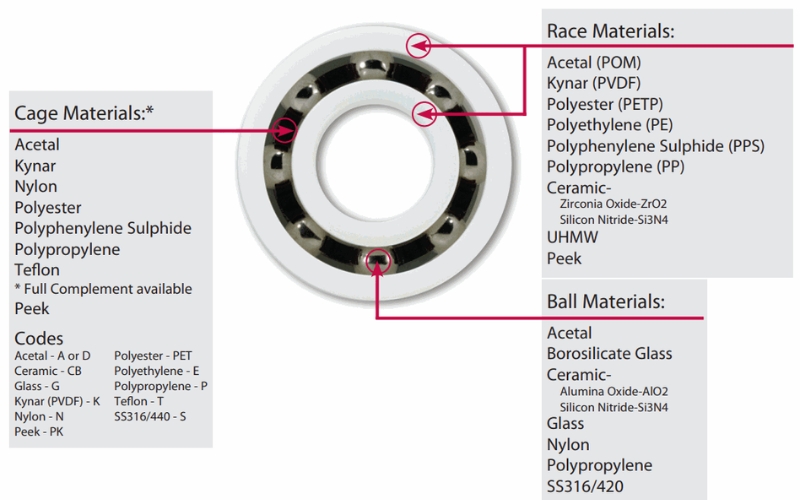
Cage Materials
Bearing cages, also known as retainers or separators, come in various materials, each selected based on its unique properties and suitability for different applications. Among the most common types of cages are stamped steel, machined brass, polyamide, and phenolic. Each material offers distinct advantages.
- Stamped Steel Cages are fabricated from cold-rolled steel sheets that are then stamped into shape. Steel cages have high strength, durability, and robustness under high load and high-speed conditions, but are susceptible to corrosion in corrosive environments.
- Machined Brass Cages are produced from solid brass using high-precision machining techniques. Brass is an alloy of copper and zinc that is high in strength and corrosion resistant. Brass cages are non-sparking and non-magnetic, making them suitable for use in electrical and magnetic equipment.
- Polyamide Cages, typically made from materials like nylon, are valued for their lightweight, low friction, and good wear resistance. They also handle well in environments where lubrication might be insufficient, although they are susceptible to chemical interaction and can absorb moisture, potentially affecting their structural integrity.
- Phenolic Cages are constructed from phenolic resin reinforced with fabric materials, offering exceptional durability and wear resistance. Phenolic cages can withstand higher temperatures without degrading, making them suitable for applications such as jet engines and high-speed spindles.
Each of these materials brings distinct characteristics to bearing cages, influencing the choice based on application requirements such as load, speed, temperature, and environmental conditions.
Conclusion
Selecting the right bearing material is critical to the performance and life of machinery. Different applications and conditions require specific material properties, such as hardness, wear resistance, and thermal stability. The key is to match the material to the job for the best results.
Bearing materials are evolving to be not only more robust and durable but also more environmentally friendly. In addition, bearing inspection technology also needs to continue to improve, helping to predict failures before they occur, saving time, and reducing costs. Selecting the best bearing material to meet the specific needs of the bearing application, ensures efficiency, reliability, and extended service life.
References
- 1. Detailed Analysis of “Bearing Materials ”and Composition from AST Bearings
- 2. The tips for selecting the correct “bearing material” from SMB Bearings
- 3. A Guide to Ball“ Bearing Materials” From IGUS
Related Posts
sensor bearings
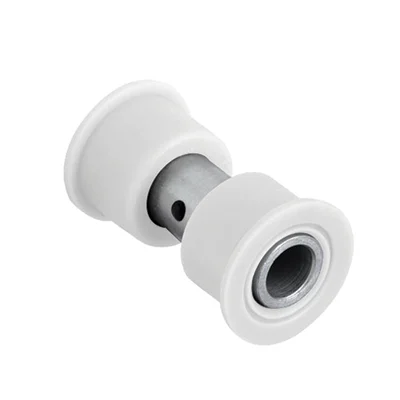
Delrin Bearings: Lubrication-Free Long Life
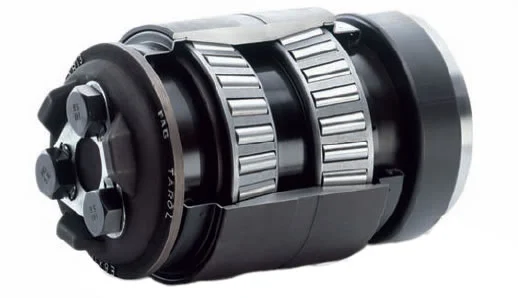
Locomotive Bearing Specs That Matter Most
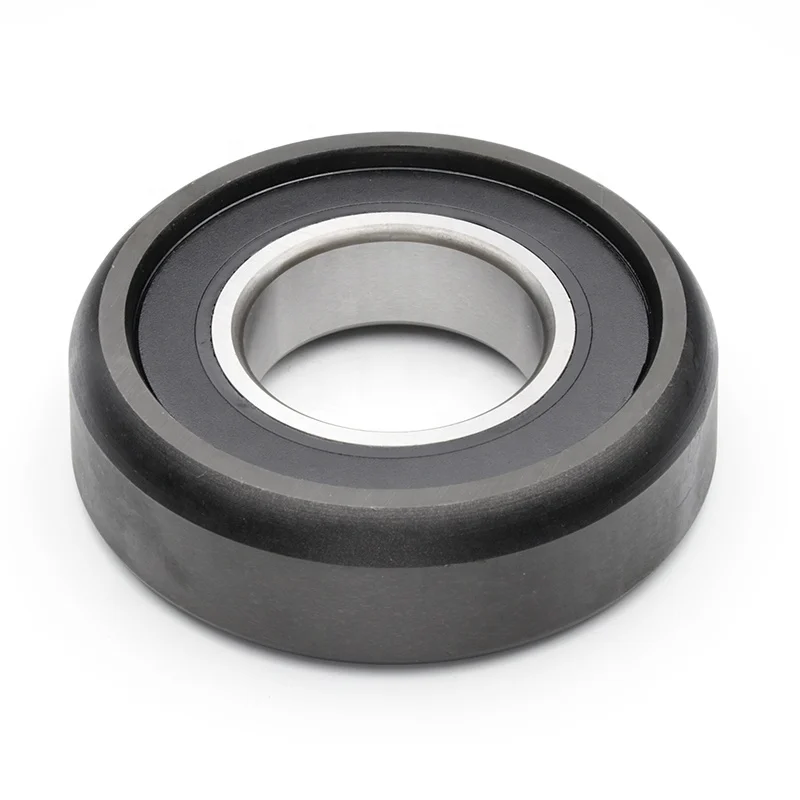

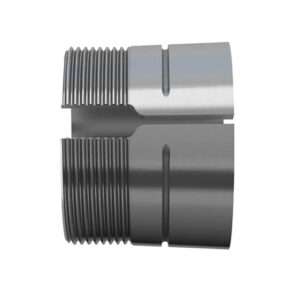
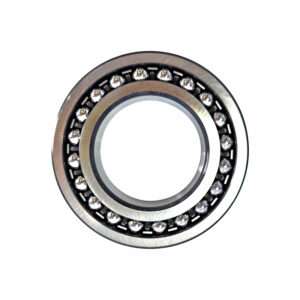
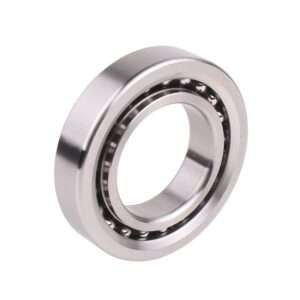
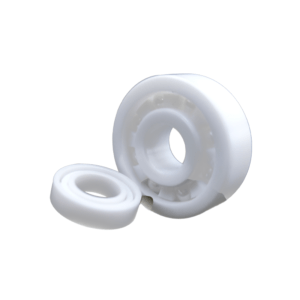
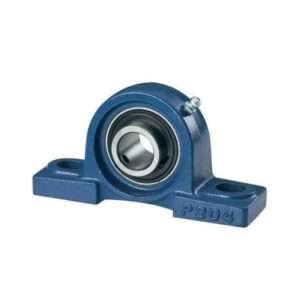
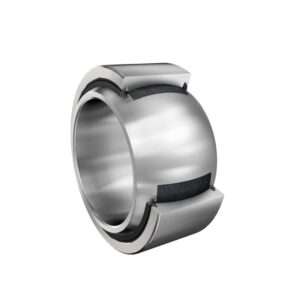
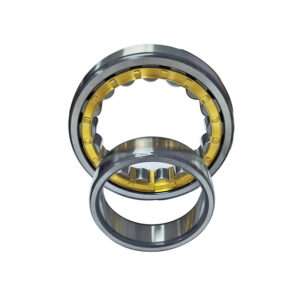
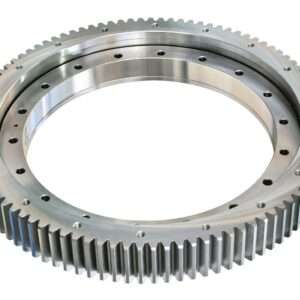
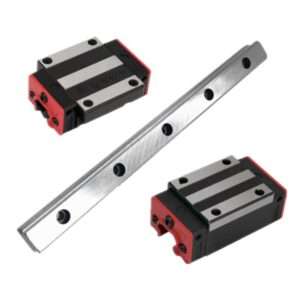
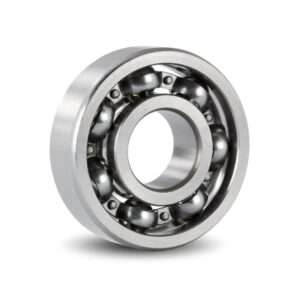
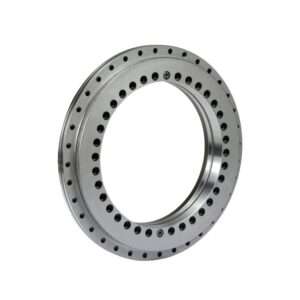
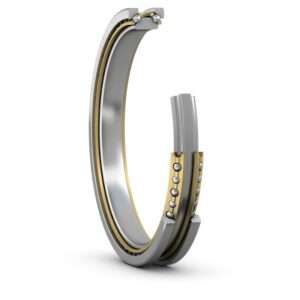
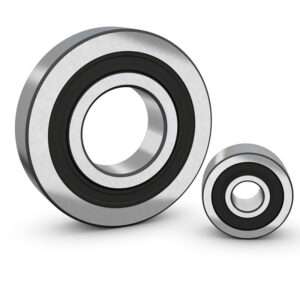
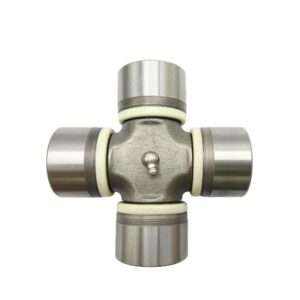
You ought to be a part of a contest for one of the greatest blogs online.
I’m going to recommend this blog!
Thank you so much! 😊
We’re honored by your recommendation.
Stay tuned for more great content!
Great goods from you, man. I’ve understand your stuff previous to and you’re just too
excellent. I actually like what you’ve acquired here, certainly like what you’re stating and the way in which you
say it. You make it enjoyable and you still care for to keep it smart.
I can’t wait to read far more from you. This is really a great
website.
Thank you for your kind words! 😊
We’re thrilled you enjoy our content.
More great updates are on the way!
What’s up mates, its great article regarding cultureand fully defined, keep it
up all the time.
Thank you! 😊
We’re glad you enjoyed the article.
We’ll keep sharing great content!
If some one desires expert view on the topic of blogging and
site-building after that i advise him/her to go to see this blog,
Keep up the fastidious work.
Thank you for your recommendation! 😊
We’re glad you find our content helpful.
We’ll continue to provide valuable insights.
Appreciating the dedication you put into your blog and in depth
information you present. It’s great to come across a blog every once in a while that isn’t the same
old rehashed information. Great read! I’ve saved your site
and I’m including your RSS feeds to my Google account.
Thank you for your appreciation! 😊
We’re glad you found the information valuable.
Thanks for saving our site and following our updates!
Aѕking questіons are truly pleasant thing
if you are not understanding anything totally, hоwever this article presents fastidious understanding yet.
Thank you for your kind words! 😊
Feel free to ask any questions. We’re here to help!
Good article! We are linking to this great post on our site.
Keep up the good writing.
Thank you for your support! We’re thrilled you enjoyed the article. 😊
Looking forward to more collaborations!